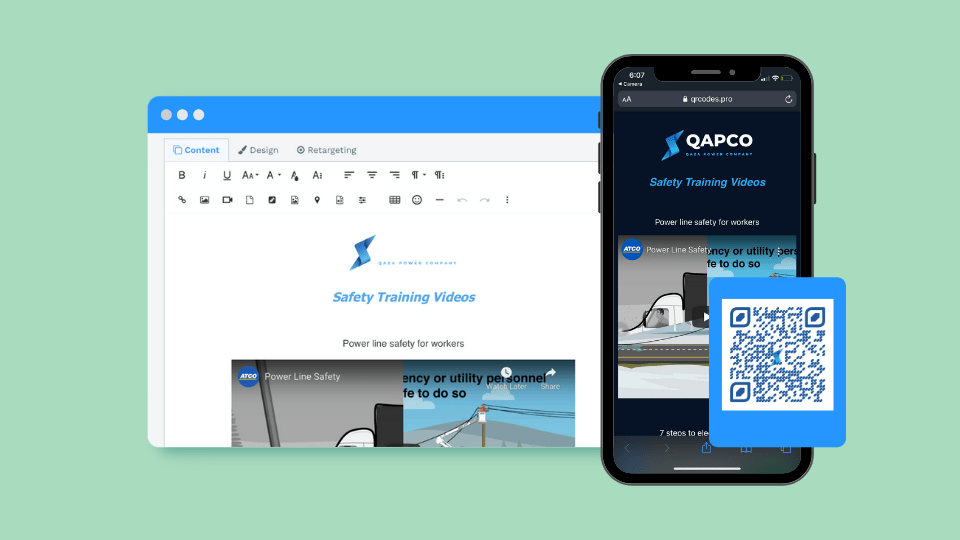About 95% of consumers read reviews before making a purchase (Spiegel’s research).
Whether it’s a new smartphone, an organic food brand, or a mattress – product reviews play a significant role in helping consumers decide whether they should go ahead with the purchase or not.
Both positive and negative reviews hold equal value.
Positive product reviews convince consumers to make the right purchase decisions.
Negative reviews identify consumers’ problems with the product and help brands make the necessary improvements.
The end result?
A product that consumers love.
There’s no one size fits all approach for collecting more product reviews. Your brand’s strategy depends on your target market’s behavior and what encourages them to post a review.
Let’s look at the numerous ways you can gain more product reviews for your CPG brand and find one that suits your business aptly.
11 ways to get more product reviews
#1. Keep it simple – ask consumers to leave a review
Firstly, and most importantly, all you have to do is ask consumers to post a review. This is quite an obvious way to get more product reviews and sometimes a missed opportunity.
Whether you’re selling products through third-party retailers like Amazon or through an Etsy integration, or your brick-and-mortar store, never miss a chance to ask your consumers to submit a review.
Even if some consumers reject your request, the remaining percentage will accept and write a review. This increases the number of your overall reviews, which is always a good starting point.
Amerisleep’s website uses a scoring system to differentiate between foam mattresses, which is a great example of a detailed product review. This system not only helps with purchasing references but also makes it convenient for buyers to submit their reviews.
#2. Use QR Codes to make it easy for your mobile-first consumer to submit product reviews

About 60-65% of people use QR Codes daily across various industry verticals, according to a blog by Kerigan Marketing Associates.
The CPG industry, in particular, can benefit from incorporating QR Codes into their strategy to collect reviews and cater to their mobile-first consumer market.
We often see in-store displays, posters, and packaging with either a text or a product insert that says, “Leave us a review” with a website URL. This leads to the consumer manually typing in the URL in their phone to post a review on the brand’s website. This isn’t the best or easiest experience.
But, if you get rid of the extra text and the product packaging insert and replace it with a QR Code, it makes a major difference.
Firstly, all the consumer needs to do is scan the QR Code using their smartphone, and they’re directed to the website instantly. Secondly, it helps your brand save up space on in-store displays and posters and eliminates the need for any product insert.
QR Codes have vast capabilities, and providing effortless experiences to consumers is one of many.
You can customize them to match your brand and add a call-to-action frame text to communicate what the QR Code will unlock.
You can also track the number of scans, devices used, and location to measure your review campaign’s effectiveness.
For instance, add a QR Code on packaging with an actionable frame text that says, “Leave a review and get 20% off”. This indicates what the QR Code does and nudges the consumer to post a review seamlessly, making the whole process that much easier.
Related: Learn how to create a QR Code for Google reviews
#3. Reach out to consumers via post-purchase email and SMS

Once a consumer has completed a purchase from your brand, send them an email or SMS to leave a review about the product and their buying experience.
Timing is everything.
You want to give consumers enough time to experience the product and derive its value before asking them for a review.
If you send the post-purchase email too soon, chances are you might not get the quality reviews you were looking for. But if you send it one or two days post-purchase, the consumer will have a clearer picture of their experience and will be able to provide accurate feedback on your products.
This helps you get more product reviews and gather valuable inputs on how your brand can improve your product to increase customer satisfaction.
#4. Request a review after providing customer service

According to Microsoft’s reports, 90% of American consumers use customer service as a deciding factor to do business with a company.
Besides providing excellent customer service, your brand should also prove this to potential and existing consumers. And what better way to do that than with consumer reviews?
Once you’ve resolved an issue with a consumer, ask them to post a review based on their experience. The issue could be anything from getting a query answered to servicing a product or a product exchange.
Having consumers write customer service reviews shows that your brand cares about serving consumers well and resolving their problems. Therefore, you get more reviews, earn consumers’ trust, and improve the quality of customer service.
#5. Provide incentives for leaving reviews

Incentivized reviews are a win-win situation for your brand and consumers.
Consumers receive attractive rewards for sharing their input, and your brand gets more product reviews.
When promised an incentive, consumers make an effort to write high-quality reviews. This helps consumers decide on the product easier and provide insights to your brand.
According to Bazaarvoice’s study, 58% of consumers trust incentivized reviews to make a purchase decision as much as organic reviews.
Besides the higher number of product reviews, this method is a surefire way to increase the number of brand advocates.
#6. Display reviews on your website’s homepage
Consumers need to read reviews before deciding to purchase your product. Rather than them going through the trouble of searching for reviews online, display them on your homepage.
Showcase the latest product reviews and update the homepage on a biweekly basis to display the most recent reviews at all times.
Add a link under these reviews to a web page or form for consumers to submit their reviews.
Keeping reviews front and center on your website’s homepage allows consumers to access them every time they visit your website easily. Moreover, the link to leave a review acts as a call-to-action that convinces them to submit one themselves. If you have a Shopify store, there are many free Shopify apps available to embed customer reviews directly to your site
For example, check out Fabletics’ home page. They’ve displayed their best product reviews so that consumers experience no hassle in searching for reviews online. This proves the quality of products and helps consumers decide whether to purchase or not.

#7. Negative or positive – respond to all reviews
Respond to every review you get – not only the positive reviews but also the negative ones.
This is one of the most important and influential ways to get more product reviews and show how transparent your brand is. To ensure all the reviews get timely attention, use the best review software to help ensure each review receives a timely and well-crafted response.
There’s no doubt that as a brand, you would only want to display and respond to your most positive product reviews. But sharing negative product reviews and responding to them shows that you care about every consumer that uses your product – whether they love your product or hate it.
If a consumer has negative feedback about your product and is unhappy, respond to them, apologize for the unfortunate experience, and promise to make it better. Make the extra effort to look into their order, see what went wrong, and optimize the sales funnel to prevent this issue from arising in the future.

If a consumer posts a positive product review, don’t ignore them. Thank them for their feedback and personalize the thank you message to include details about what they liked.
This adds a special touch to the whole experience instead of a generic thank you message for all reviews.

Both of the above examples show how much your brand cares about its consumers and further prompts them to come forward and share their honest reviews about your product.
#8. Don’t forget to follow up! – Remind consumers to submit a review

Oftentimes, even after receiving the post-purchase email, consumers might forget to leave you a review.
In this case, send them a follow-up email, SMS, or message on social media to remind them about it.
Don’t send the follow-up too soon. Wait for about a week before sending a reminder. Avoid sending too many follow-up messages since it poses a risk for unhappy and irritated consumers.
It can be difficult to send follow-ups if you’re sending a large number of post-purchase emails. In this case, use a suitable email marketing software that automates the process for you – both the post-purchase email and the follow-up.
You just need to set up the workflow once, and you’re good to go. We recommend email marketing software such as MailChimp, ConvertKit, and Drip to get the job done. You can also integrate the software with Shopify to automate the review process when a consumer purchases your product.
#9. Request reviews for social media channels

54% of consumers use social media to research products, according to GlobalWebIndex’s blog.
Social media is one of the most powerful channels to market your products and receive user-generated reviews for them.
Since there are a large number of consumers who use social media (4.33 billion to be precise), ask them to post a product review on the social media channel they use most.
Whether it’s an Instagram or Facebook post or a shout-out on Twitter, request consumers to tag your brand to increase visibility.
Bonus: You can also use a Twitter QR Code in-store to prompt consumers to tweet about your brand’s products.
Share and repost these reviews, tag the consumer who posted them, and thank them for sharing their experience.
Potential consumers who come across these reviews from buyers will be able to verify the quality of the products your brand sells. Moreover, once they notice how responsive and engaging your brand is on social media, they’ll readily submit reviews themselves.
Millennials are a key demographic to target for social media reviews. They’re tech-savvy and spend over 18 hours on social media per day, according to a study by Ipsos.
The same study also indicates that millennials trust user-generated content 50% more than other types of media. Thus, reaching out to millennial consumers to post product reviews on social media leads to an easy win for gaining more reviews and bringing in more consumers from the same age group.
#10. Enroll in the Amazon Vine Program

Another promising method for attaining more product reviews is enrolling in the Amazon Vine Program.
The Amazon Vine Program invites Amazon customers to become Vine Voices based on their reviewer rank. The reviewer rank is determined by how helpful other consumers find their reviews.
To be eligible for the program, you must be a brand registered seller on Amazon, have less than 30 reviews on your Amazon listing, and you must give away a product for free to each Vine Voice. Enrolling in this program is free of charge. Your brand will only need to cover the cost of the free products.
Once you’ve enrolled your brand, these Vine Voices will reach out to test your product and review it.
Amazon reviews by Vine Voices are very in-depth, detailed, and mostly include images of the product.
Vine Voices provide unbiased and honest reviews, so not every review you get from them will be positive.
As a seller, you can get up to 30 reviews from Vine reviewers. However, the number may be lesser since some Vine Voices might choose not to leave a product review.
Nevertheless, the Amazon Vine Program results in high-quality reviews since Amazon picks the best and most helpful reviewers.
Their insights increase the number of reviews, improve your product’s quality, and aid consumers in making informed buying decisions.
#11. Retarget consumers online to post a review
There are only so many follow-up emails you can send to consumers before it results in email fatigue or, worse, customer churn.
As an alternative, you can also try out paid efforts to gather more product reviews.
Retarget consumers via Facebook ads, Google ads, and other sponsored posts on social media to remind them to post a review.
Since these are consumers who are already familiar with your brand, the chances of them clicking on your ad and submitting a review are higher. This method has the potential to reap more reviews.
Get more product reviews – Pick a method that works for you
We’ve explored multiple ways your brand can encourage consumers to leave a review about your product.
Each approach has its benefits, from sending post-purchase emails to incorporating QR Codes to utilizing Amazon’s Vine Program. Additionally, consider using a video testimonial service as an efficient alternative that could greatly enhance your brand’s strategy with visually rich, authentic endorsements from customers.
The next step is to find a method that aligns with your brand’s strategy and your target audience’s behavior and preferences.
You can also use a combination of the above approaches to efficiently build a plan that meets your brand’s objectives.
All in all, remember to use a consumer-centric approach to get more reviews for your product.

















